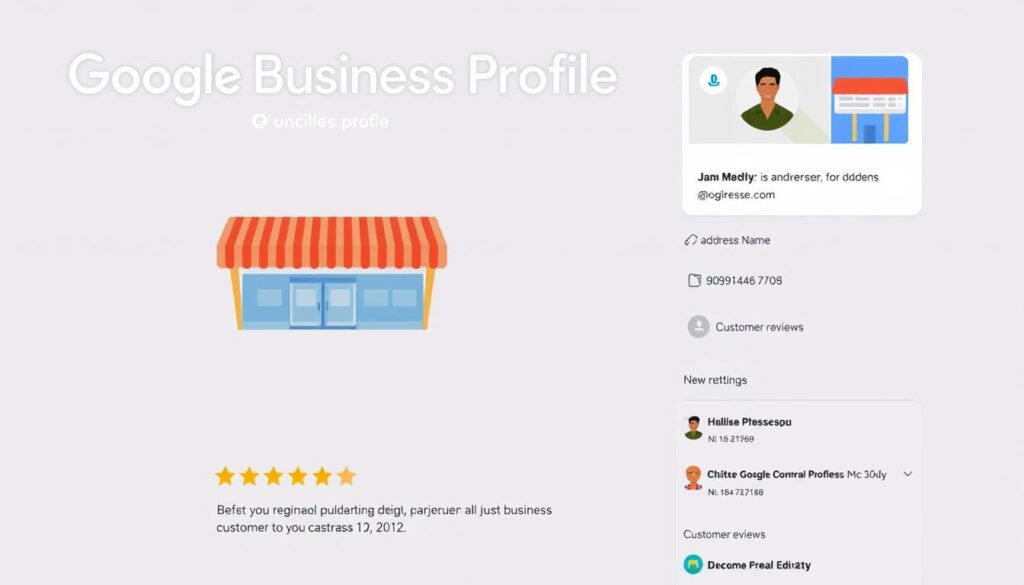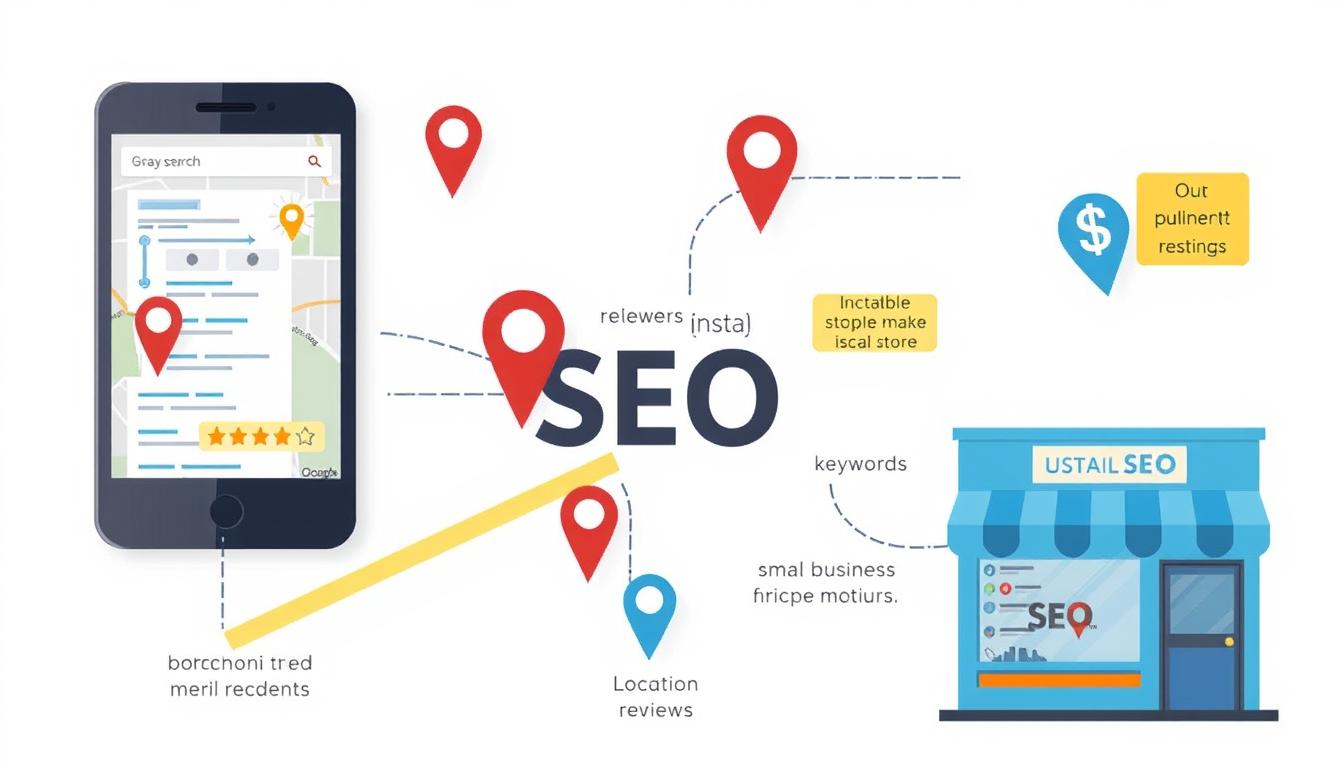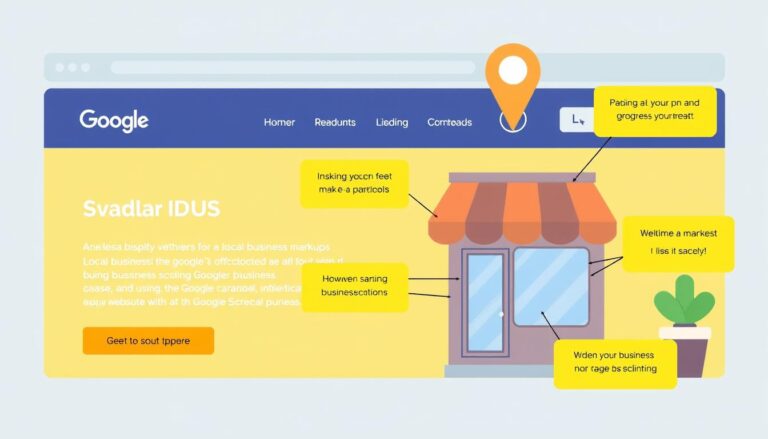Local SEO Examples: Boost Your Business Visibility
Did you know that 76% of people who search for something nearby on their smartphone visit a related business within a day? This staggering statistic highlights the importance of local SEO for businesses looking to increase their visibility in local search results.
As a business owner, you understand the value of having a strong online presence. But, with so many businesses competing for attention, it can be challenging to stand out. That’s where local SEO comes in – a tailored approach to SEO that helps businesses like yours attract nearby customers and drive more foot traffic to your website and physical location.
In this article, we’ll explore real-world local SEO examples and strategies that can help you improve your visibility in local search results and reach more customers.
Key Takeaways
- Understand the importance of local SEO for your business
- Learn how to optimize your website for local search
- Discover strategies to improve your online presence and attract nearby customers
- Explore real-world local SEO examples and case studies
- Get actionable tips to boost your business visibility in local search results
Understanding Local SEO and Its Importance
With the majority of consumers using search engines to find local businesses, understanding local SEO is no longer optional. As a business owner, you’re likely aware that having an online presence is crucial, but local SEO takes it a step further by connecting you with customers in your immediate area.
What Local SEO Means for Businesses
Local SEO is about optimizing your online presence to attract local customers. It’s not just about being found online; it’s about being found by the right people at the right time. According to Google’s statistics, 46% of all searches have a local intent, and “near me” searches have grown exponentially in recent years. Effective local SEO ensures that when someone searches for “pest control near me” or “auto glass repair in [city],” your business appears at the top.
This means that local SEO is not just a nicety, but a necessity for businesses looking to attract local customers and stay ahead of the competition.
Why Local Search Matters in Today’s Digital Landscape
Local search has become an essential marketing channel, driven by the rise of mobile usage and changing consumer behavior. People are using search engines to find local businesses before making purchasing decisions, making local search a critical component of any business’s online strategy.
Some key factors that highlight the importance of local search include the growth of “near me” searches on mobile devices, the competitive advantage gained by businesses that prioritize local search optimization, and the connection between local search and high-intent customers who are ready to make a purchase.
What is an Example of Local SEO?
Local SEO examples provide valuable insights into how businesses can optimize their online presence for local search. By examining real-life case studies, we can understand the practical applications and benefits of local SEO strategies.
Case Study: Mile High Roofing’s Local SEO Implementation
Mile High Roofing, a roofing service provider, saw significant improvements in their local search visibility after implementing a targeted local SEO strategy. By optimizing their website with location-specific keywords and creating content relevant to their service area, they were able to attract more local customers.
This case study demonstrates the importance of local SEO for businesses that rely on local clientele. For more examples and insights into local SEO, you can visit our blog on local SEO examples.
Case Study: Red Egg Marketing’s Location-Targeted Landing Page
Red Egg Marketing created a location-targeted landing page for a client, which resulted in improved search engine rankings for location-based searches. The strategic use of local keywords and a clear call-to-action on the landing page contributed to its success.
This example highlights the effectiveness of creating content that is tailored to specific geographic locations, enhancing the local search visibility of a business.
Case Study: Mark’s Diamonds Local Jewelry Store Optimization
Mark’s Diamonds, a local jewelry store, benefited from a well-optimized landing page that included strategic use of local keywords like “Denver” and “Cherry Creek.” This optimization helped them appear prominently in search results for relevant local searches, driving more foot traffic to their store.
The success of Mark’s Diamonds demonstrates how local SEO can be a powerful tool for retail businesses looking to attract local customers and increase in-store visits.
Optimizing Your Google Business Profile
To improve your local search rankings, it’s essential to optimize your Google Business Profile effectively. A well-managed Google Business Profile not only enhances your online presence but also provides potential customers with the information they need to choose your business.

Essential GBP Setup and Verification Steps
Setting up and verifying your Google Business Profile is the first step towards local SEO success. Ensure you provide accurate and up-to-date information, including your business name, address, and phone number (NAP). Verification is crucial as it confirms your business’s existence and location, making it visible in search results.
Maximizing Profile Features: Photos, Posts, and Q&A
To maximize your Google Business Profile’s potential, utilize its various features. Upload high-quality photos that showcase your business, products, and services. Regularly posting updates and offers keeps your customers engaged. The Q&A feature allows you to address common questions directly on your profile, enhancing customer experience.
For instance, a local bakery can post daily specials, share behind-the-scenes kitchen moments, and answer questions about their products. This not only attracts more customers but also builds a community around your business.
Maintaining NAP Consistency Across Platforms
Consistency in your business’s NAP across the web is vital for local search visibility. Inconsistent information can confuse customers and search engines, potentially harming your rankings. Ensure your NAP is standardized across your website, Google Business Profile, and social media profiles.
NAP consistency is a trust signal for search engines. To maintain it, regularly audit your business information across all platforms and update it as necessary. This includes handling changes like relocations or phone number updates across all directories and your website.
Creating Location-Specific Content for Your Website
Local SEO success hinges on creating location-specific content that addresses the needs and concerns of your local customers. This involves understanding what your target audience is searching for and tailoring your content to meet those needs.
To achieve this, you need to develop a content strategy that is focused on your local audience. This can include creating content that is relevant to your local community, such as news, events, or guides specific to your area. By doing so, you can increase your website’s visibility in local search results and attract more targeted traffic.
Developing Local Landing Pages That Convert
One of the most effective ways to create location-specific content is by developing local landing pages. These pages should be designed to cater to the specific needs of your local audience, providing them with the information they need to make informed decisions. To create effective local landing pages, you should:
- Use location-specific keywords and phrases to improve search engine rankings.
- Include content that is relevant to your local audience, such as local testimonials or case studies.
- Ensure that your landing pages are optimized for conversions, with clear calls-to-action and easy-to-use contact forms.
For more information on creating local SEO-friendly content, you can check out this guide on local SEO content creation.
Local Keyword Research and Implementation
Conducting thorough keyword research is essential for identifying the terms and phrases your local audience uses to search for businesses like yours. To do this effectively, you should think like your customer and brainstorm variations of keywords, including location-based terms like “[Service] in [City]” or “[Service] near me.”
Using keyword research tools like Google Keyword Planner, Ahrefs, or SEMrush can help you discover relevant keywords, analyze search volume, and assess competition. Don’t forget to target long-tail keywords, which are more specific phrases that can drive highly targeted traffic to your website. By implementing these keywords strategically throughout your website’s content, you can improve your local search visibility and attract more relevant traffic.
Building and Managing Local Citations

A well-managed local citation profile is fundamental for businesses seeking to improve their local search presence. Local citations, which are mentions of your business’s name, address, and phone number (NAP) on other websites, play a critical role in local SEO. Inconsistent or inaccurate citations can harm your business’s online visibility and credibility.
To get started with building and managing local citations, it’s essential to identify the top directories where your business should be listed.
Top Directories for Local Businesses
Listing your business in reputable directories is a crucial step in citation building. Some of the top directories for local businesses include Google My Business, Yelp, and Bing Places. These directories not only improve your online visibility but also provide potential customers with essential information about your business.
Other notable directories include industry-specific listings and local business associations. For instance, a healthcare provider might benefit from being listed in directories like Healthgrades or RateMDs.
Citation Audit and Cleanup Strategies
Conducting a thorough citation audit is vital to identify inconsistencies, duplicates, and outdated information. This process involves checking your business’s NAP across various directories and ensuring that the information is accurate and consistent.
To streamline the audit and cleanup process, businesses can utilize citation management tools like Moz Local, BrightLocal, or Yext. These tools help in identifying and correcting inconsistencies, thus improving the overall health of your local citations.
By maintaining accurate and consistent local citations, businesses can enhance their local SEO, improve search rankings, and increase customer trust.
Leveraging Customer Reviews for Local SEO Success
Customer feedback, in the form of reviews, is a key driver of local SEO success, influencing both search rankings and consumer trust. As a business owner, you understand the importance of having a robust online presence, and customer reviews are a crucial part of that.

Effective Review Generation Tactics
Generating reviews from satisfied customers is the first step in leveraging them for local SEO success. To encourage customers to leave reviews, focus on providing exceptional service and making the review process as seamless as possible. You can achieve this by:
- Training your staff to ask satisfied customers for reviews
- Displaying review links prominently on your website and social media channels
- Using review management software to streamline the process and monitor feedback across multiple platforms
By implementing these tactics, you can increase the volume of reviews and improve your business’s online visibility.
Responding to Reviews: Best Practices
Responding to customer reviews is just as important as generating them. It shows that you value customer feedback and care about their experiences. When responding to reviews, keep the following best practices in mind:
- Respond promptly to both positive and negative reviews
- Personalize your responses to show you value each customer’s feedback
- Address concerns and apologize when necessary
- Highlight your business values and commitment to customer satisfaction
By responding thoughtfully to reviews, you can build trust with potential customers and demonstrate your commitment to delivering excellent service.
Active review management not only enhances your business’s reputation but also signals to search engines that your business is engaged and responsive. This, in turn, can improve your local search rankings and drive more customers to your business.
Implementing a Comprehensive Local SEO Strategy
Local SEO is not just about optimizing your website; it’s about creating a holistic strategy that drives real results for your business. To succeed in local search, you need to understand the various components that contribute to a comprehensive local SEO strategy.
A robust local SEO strategy involves multiple facets, including optimizing your Google Business Profile, creating location-specific content, building local citations, and leveraging customer reviews. By integrating these elements, you can significantly improve your business’s online visibility and attract more targeted traffic.
Step-by-Step Local SEO Action Plan
To implement a successful local SEO strategy, follow these steps:
- Conduct thorough local keyword research to identify relevant terms and phrases.
- Optimize your website’s structure and content for local search, including creating location-specific landing pages.
- Claim and optimize your Google Business Profile, ensuring accuracy and consistency across all online directories.
- Build high-quality local citations on relevant directories and websites.
- Encourage customers to leave reviews on your Google Business Profile and other relevant platforms.
By following this step-by-step action plan, you can establish a strong foundation for your local SEO efforts and drive meaningful results for your business.
Measuring Success: Key Metrics and Analytics
To gauge the effectiveness of your local SEO strategy, it’s crucial to track key metrics and analytics. Use tools like Google Analytics to monitor website traffic, bounce rate, and conversions. Google Search Console helps you understand your landing pages’ performance in search results and identify technical SEO issues.
Some key performance metrics to track include:
- Ranking improvements for target keywords
- Search visibility and website traffic
- Conversion rates and business results (calls, form submissions, store visits)
By regularly monitoring these metrics and adjusting your strategy accordingly, you can continuously improve your local search performance and achieve better results.
Conclusion: Taking Your Local Business to the Next Level
The journey to local SEO success is multifaceted, involving a combination of technical optimization, content creation, and community engagement. As we’ve explored throughout this article, a comprehensive local SEO strategy is crucial for businesses aiming to boost their visibility and dominate the local search landscape.
By implementing the strategies discussed, such as optimizing your Google Business Profile, creating location-specific content, and leveraging customer reviews, you can significantly enhance your business’s online presence. It’s essential to remember that local SEO is an ongoing process that requires consistent attention and adaptation to the ever-changing search landscape.
Key takeaways include: the importance of an integrated approach to local SEO, the need to start with foundational elements before moving to advanced tactics, and the value of leveraging community connections as a competitive advantage. By applying these principles and staying informed about emerging trends, businesses can achieve compounding benefits over time.
Ready to take your digital marketing to the next level? Contact Red Egg Marketing today. We’ll help you develop a customized strategy to achieve your business goals and dominate the local search landscape. By focusing on local SEO and community engagement, you can drive revenue growth, improve customer acquisition, and establish a strong presence within your community.
FAQ
How can I improve my business’s online visibility through local SEO?
To boost your online presence, focus on optimizing your Google Business Profile, creating location-specific content, and building high-quality local citations. This will help your business appear in search results when customers look for services or products in your area.
What role do customer reviews play in local SEO?
Customer reviews are crucial for local SEO success. They not only enhance your business’s credibility but also contribute to higher rankings in local search results. Encourage your customers to leave reviews on your Google Business Profile and other relevant directories.
How often should I update my Google Business Profile?
Regular updates to your Google Business Profile can improve your local SEO. Post updates, offers, or events at least once a week to keep your profile fresh and engage with your customers. Additionally, ensure your profile information is accurate and up-to-date.
Can I manage my local SEO efforts on my own, or do I need professional help?
While it’s possible to handle local SEO on your own, having professional guidance can be beneficial, especially if you’re new to SEO or have a complex business. Consider consulting with an SEO expert to develop a tailored strategy that meets your business needs.
How do I measure the success of my local SEO strategy?
To gauge the effectiveness of your local SEO efforts, track key metrics such as website traffic, search engine rankings, and the number of leads or conversions generated from local searches. Utilize tools like Google Analytics to monitor your progress and adjust your strategy accordingly.
What is the importance of NAP consistency in local SEO?
NAP (Name, Address, Phone Number) consistency is vital for local SEO. Ensure that your business’s NAP is uniform across all online directories, citations, and your website to avoid confusing search engines and potential customers.






